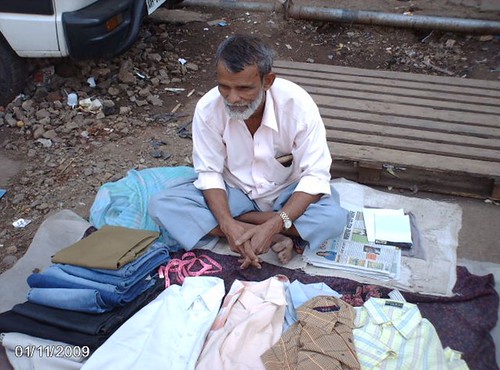By Soroor Ahmed, TwoCircles.net,
We have a fascination for digging deep into the ancient history, even when we have enough ammunition in the relatively modern period to silence those who deride, ridicule and hate us.
So when Thackerays––Bal, Raj and Uddhav––once again started gunning for north Indians, and one of them even went on to dub Biharis as infiltrators, we––courtesy a non-Bihari Congress general secretary, Digvijaya Singh––got a material in the form of Prabodhankar Thackeray Samagra.

People from Bihar and UP earning livelihood in Mumbai
This is a book written by Keshav Sitaram Thackeray (pen name Prabodhankar Thackeray), father of Shiv Sena patriarch, Bal Thackeray. It was published in 1990s by the then Shiv Sena-BJP government of Maharashtra and it reportedly established that Thackerays were originally from Magadh region of Bihar.
Soon a couple of pandas of the ancient city of Gaya in Bihar––where Hindus from world over come to offer prayer for the salvation of their ancestors during Pitripaksha Mela––started working overtime to trace the origins of Thackerays. Some historians told the media that the Thackerays might have left Bihar during the Maurya period while some others put it Nanda era. A renowned Patna University Professor of History deemed the effort as an exercise in futility.
Yet, one should let those engaged in tracing the date of Thackerays exit from Bihar continue their research for their own satisfaction. But then, this may not be the answer to the larger allegation of Biharis being infiltrators in Maharashtra.
Let us concede for a moment: they are infiltrators. But then these infiltrators are, in general, not busy in any destructive work there; rather they are engaged in large scale constructive efforts. They are not only involved in nation (rashtra)–building, but, in the process, also Maha-rashtra (building). These infiltrators earn their livelihood by sheer hard work without shedding any drop of blood.
But then what about invaders––that too from the same western region of the country––who caused widespread destruction in north and east India, which included Bihar too. Obviously, the Thackerays would not like to listen to it.
For this we need not leaf through pages of ancient history books, manuscripts and records. It happened in mid-18th century when the Mughal empire was falling apart and British yet to establish their authority on India.

Maratha invaders stormed large part of Bihar, Jharkhand, Madhya Pradesh, Uttar Pradesh, Odisha, Bengal and other parts of north and east India. They did so not to earn livelihood peacefully but to conquer, loot and plunder the region. But then Marathas have no such monopoly on this practice. The invading armies usually indulge in such mayhems and killings.
True there are historians and writers, who glorify the expansion of Marathas after the weakening of Mughals in Delhi. But the hard reality cannot be ignored.
What is strange is that Biharis, in particular, and north Indians in general, bore no ill-will against the Marathas and their history. Equally large number of them glorify the struggle of Shivaji and praise the subsequent Peshwa rules. Biharis and other north Indians tend to ignore the excesses committed by the Marathas on their people and soil, though they were committed so recently in history.
While many in north India see Shivaji as a pan-India leader the Shiv Sainiks, who take inspiration from him, project him as the hero of Marathas. In fact they are, in one way or the other, cutting the stature of their own hero.
Those engaged in discovering the roots of Thackerays should also re-visit the history of Marathas and explain the generosity and large-heartedness of the north Indians, especially Biharis, who forgave the crimes committed by their invading armies so close in history.

